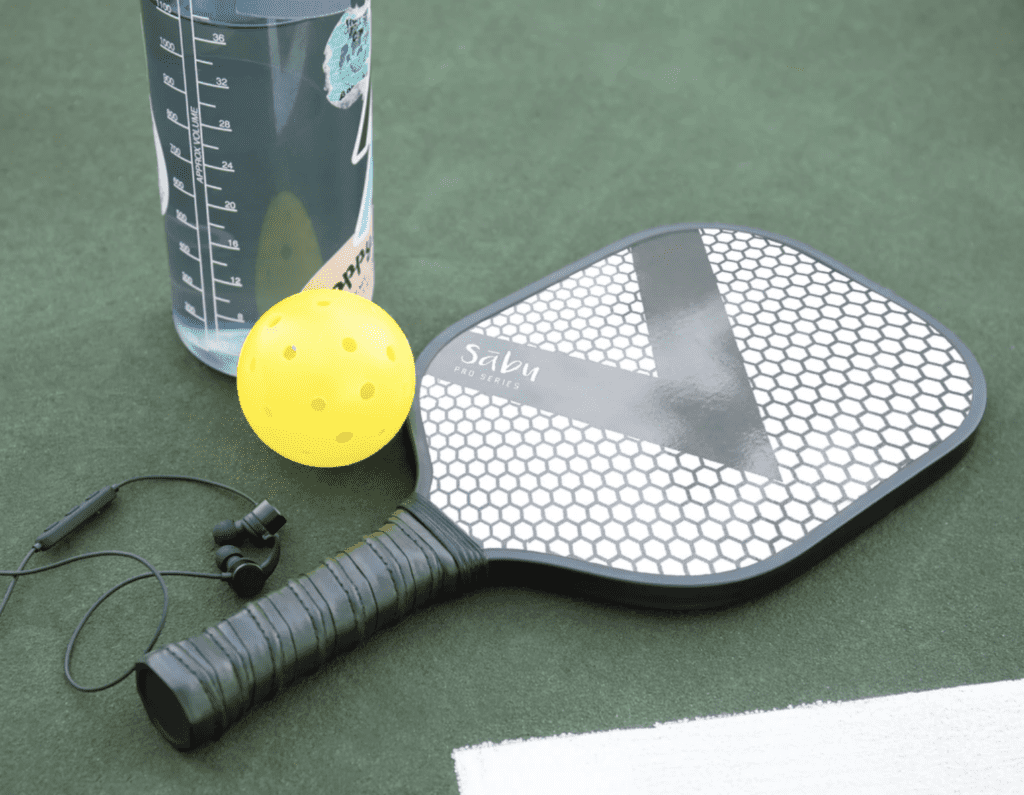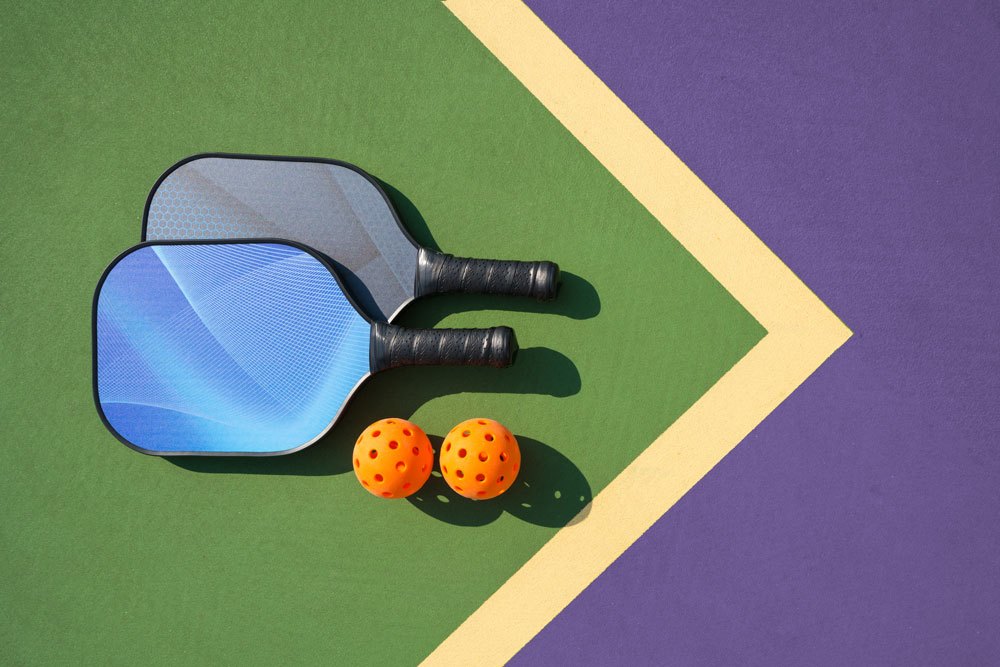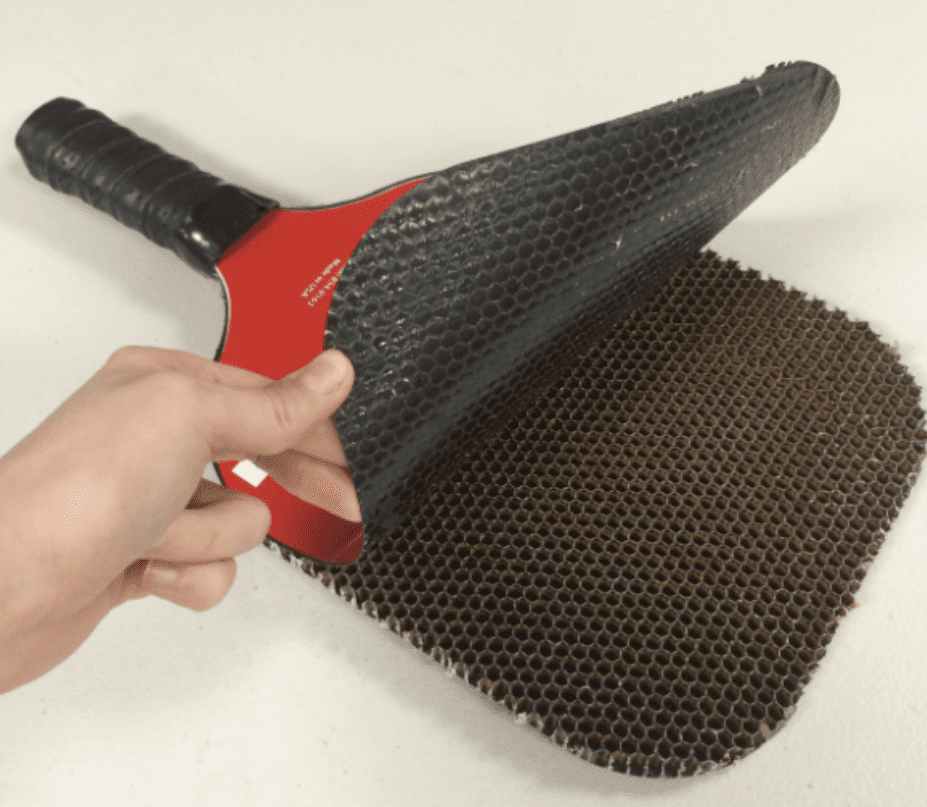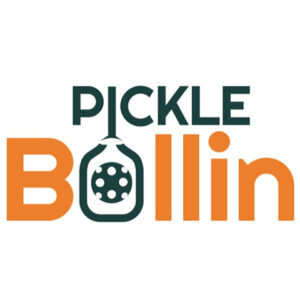
Pickleball paddles can be made with different surface materials, it’s important to know what materials are good for what. This is because the materials affect different shot types and play a factor in the cost of manufacturing the paddle. The most common surface material types for pickleball paddles are fiberglass/composite, graphite/carbon fiber, and wood. Below you’ll find the best pickleball paddle materials.
Pickleball Paddle Face Materials

Graphite
Graphite paddles are typically on the pricier side, but they are lightweight and robust. You can move them quickly and hit the balls with excellent power. They offer a balance between power and control, emphasizing the former, making them top picks for professional players.
Two of the reviewed HEAD pickleball rackets had a graphite construction. The Extreme Tour and the Radical XL both feature graphite and carbon as their principal materials.
Wood
If you are on a budget, consider a wood paddle. These rackets are heavy, durable, and cheap, so they can still provide a decent amount of power. In addition, they will last forever and are great for beginners who aren’t committed to the game yet.
Nonetheless, these are not the best options for serious competitors. If you genuinely want to excel at pickleball, you will benefit from a graphite-based or composite paddle.
Composite
Composite paddles typically have a fiberglass hitting surface with a core composed of a different material. Textured fiberglass surfaces offer a fair amount of spin, making them suitable for advanced players.
These versatile paddles are often moderately priced, and they come in various weights and sizes. In addition, many HEAD pickleball products are composite, including the Radical Pro, Extreme Elite, and the Extreme Pro L.
How Does The Face Material Impact What Paddle I Choose
The facing material doesn’t have as much of an effect on how the paddle performs when playing as the paddle core material does. However, it certainly does make a difference. When choosing a paddle, you want to make sure you pay attention to the type of facing used as well as the thickness of the core.
If you want a pickleball paddle that will provide you a lot of power, then you’ll want to look for a thinner polypropylene core with a fiberglass face.
If you want a pickleball paddle that will provide you a lot of control, then you’ll look for a thicker polypropylene core with a graphite or carbon fiber face.
You can also get a good mix of power and control elements together. For example, to achieve this you might want a thicker core paddle with a fiberglass face. The thicker core will give you great control while the fiberglass will give you some power so you can put away balls when you need to.
Pickleball Core Materials

Core constructions are a recently developed technology. They can make the paddles stronger, lighter, and denser. Common materials include polypropylene, aluminum, and Nomex.
Polypropylene
Polypropylene core constructions are silent but deadly. So engineers crafted them after aluminum to improve their power while reducing noise. Quiet paddles work well in private gyms, homes, and closed communities as they do not disturb passers-by.
All of the reviewed HEAD pickleball rackets have an optimized tubular construction (OTC) polypropylene honeycomb core.
Aluminum
Aluminum cores are light and quiet, and they preceded polypropylene. You will find extra ball control and paddle maneuverability with these, but they lack the power of polypropylene cores.
Nomex
The first material in professional pickleball paddles was Nomex. This material came from aircraft, and it continues to reign in the market. These cores are noisy and hardy, and they offer incredible power. Nonetheless, their loud popping sound may not fly where you intend to play.
Core Thickness
Core thickness is a huge thing to take into consideration because paddles will perform differently depending on the thickness of the core.
A thicker core is usually around 16mm thick. Paddles with thicker cores are specifically known for softening the feel of the paddle when the user is using it and increasing control. They also help stabilize the paddle in the users hand so there is less wobble from off center shots.
A thinner core paddle usually ranges between 10mm and 13mm thick. Thinner core paddles are known for having more power and pop at the expense of some control and feel. These paddles are not as stable as thicker core paddles and will give you more feedback when you hit an off center shot.
The thing to remember is that as the core gets thicker, its softness and control increases. When the core gets thinner, the harder the paddle feels off the face and it’s power increases.
How Does the Core and Its Thickness Impact What Paddle I Choose?
The paddle core and it’s thickness affect the performance of the paddle more than the facing of the paddle does. So I want to stress to you it’s important to pay close attention to these elements of the paddle when you’re doing your research.
If you are an aggressive player that likes to attack the ball, then you’ll like a thinner pickleball paddles with polymer cores and carbon fiber cores.
Do you prefer to have a pickleball paddle that provides more control over power? Then you’ll like thicker 16mm polymer core paddles. If you want something that provides both, then you’ll like polymer core paddles at or around 13mm thick.
Pickleball Paddle Features to Keep in Mind
Here are some features other than the best pickleball materials to keep in mind as you search for the right pickleball paddle for you.
Weight
Suppose there’s one vital feature that you should pay attention to its weight. Weight determines how the paddle feels when you’re holding it, and it affects how well you swing.
Pickleball paddles can range significantly in this area, from anywhere from six to fourteen ounces. Lightweight paddles are under 7.3 ounces, while medium ranges from 7.3 ounces to 8.4 ounces. Anything over 8.5 is considered heavy.
Grip Size
Every pickleball player’s goal is to take accurate, controlled shots, and finding the proper grip is paramount to achieving that goal.
There is some debate about long vs. short grips. You’ll hear that longer grips offer more stability while shorter grips deliver greater control. But in our humble opinion, the grip should be neither too long nor too short. For most people, a good rule of thumb is that it be roughly the same size as your palm and comfortable to hold.
Edge Guard
Some pickleball paddles have edge guards or protection for the paddle’s edge against chips and damage. Most people prefer medium-sized edge guards, though others go with large sizes, which increase the hitting surface. The trade-off with large edge guards is that the pickleball paddle’s weight increases, which may not be something you want.
Frequently Asked Questions
When looking for the best pickleball paddle materials, you may have a more few questions. It doesn’t matter if you’re a beginner or have some pickleball experience. You should learn as much as you can about paddles.
Here are some common paddle questions.
How Long Do Paddles Last?
The lifespan of a paddle depends on the materials and construction. For example, if the paddle’s interior is thin and the exterior is too smooth, your paddle may not be suitable for long-term use. However, it can be good to get you started.
You should also consider that the area between the paddle and the handle is crucial. That can be a weak spot on many paddles, and that can cause your paddle to break even when the surface is still usable.
If possible, feel the paddle and inspect the edges and the handle. Then, you can determine if it’s durable enough to last through many games.
What Paddles Give You More Power?
Heavier paddles have the most power. While lightweight paddles can be easier to hold and maneuver, they won’t be as strong.
You can also look for super-heavy-weight paddles for even more power. But if you just need an average amount of that, you can get a medium-weight paddle.
What Paddles Offer More Control?
While a larger paddle is more powerful, you may sacrifice control. Smaller and lighter paddles are better for players who need to respond quickly in a game.
You should look for a lightweight or medium-weight paddle for more control. A smaller head can help reduce the overall weight so that you can have more control over your shots.
Can a Good Paddle Help a Beginner?
Many things can help beginner pickleball players, and the right gear is essential. You don’t need the most expensive paddle, but you do need a good-quality one that won’t break the first time you use it.
As a beginner, you may want to start with a lighter paddle. While it won’t be as powerful, it won’t strain your wrist. Once you start playing more, you can decide if you want a heavier, more powerful paddle.
How Should You Hold Your Paddle?
While playing, try to keep your paddle near your chest. That will help improve your reaction time to make more shots early on.
You should also consider stretching before you play. Many pickleball injuries are preventable by warming up. Start by walking or jogging around the court, then stretch out your wrists and arms to help avoid fatigue.
Make sure your paddle feels comfortable and secure in your hand. If the handle feels too short, you may not have the best pickleball paddle for you. On the other hand, it shouldn’t feel like you have to strain to hold the paddle securely.
Are Expensive Paddles Better?
While many expensive paddles are excellent quality, they aren’t always the best. Therefore, you should consider your current paddleball experience and your needs.
Sometimes, paddles are more expensive because they’re thicker and heavier. So if you want something lighter, you may prefer a more affordable option.
Wrapping Up
Now that you know about the best pickleball paddle materials, hopefully I was able to answer any questions you had and you’re now closer to figuring out what kind of pickleball paddle is right for you.
When it comes down to it, whether it’s graphite, composite, or wood, is not the most important factor in picking out your paddle. Each has its benefits and drawbacks, and there are other factors that you also need to take into consideration.
The bottom line? Buy whatever paddle that feels right in your hands. I understand if you already have a specific model or brand in mind, it all comes down to a paddle that feels right for you and your skill level.
It’s crucial for you to be comfortable with your paddle, this is because the game is going to be much more enjoyable this way. Pickleball is quickly becoming the most popular sport in the country, it’s a fun activity to pass the time or even grow to play professionally! Take your time and ask questions when picking out your paddle to be sure you get it right!
Looking for more? Here are some other articles I put together:
- The Best Pro Pickleball Paddles
- Indoor vs. Outdoor Pickleball Paddles
- The Best Pickleball Paddles for Women
- Composite vs. Graphite Pickleball Paddles
- Can You Play Pickleball on a Tennis Court?
- Best Pickleball Paddle for Beginners
- Pickleball Strategy – Advanced
- What Is the 2 Bounce Rule in Pickleball?
- What is the Double Bounce Rule in Pickleball?
- Pickleball vs. Tennis, What is the Difference?
- The Best Women’s Pickleball Shoes
- The Best HEAD Pickleball Paddles
- Pickleball Serving Rules, Techniques, & Strategies
- Pickleball Volley Rules
- What is a Fault in Pickleball?
- Best Pickleball Paddle in 2021
- Men’s Pickleball Shorts
- Engage Pickleball vs. Onix Pickleball
- The Best Pickleball Shoes for Men
- Onix Pickleball
